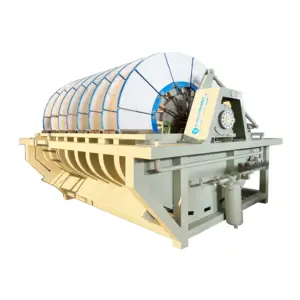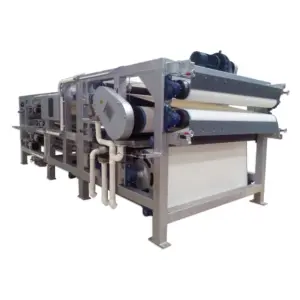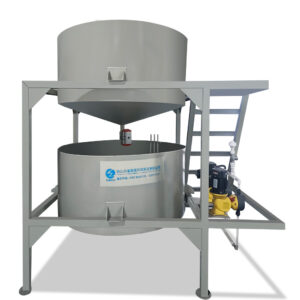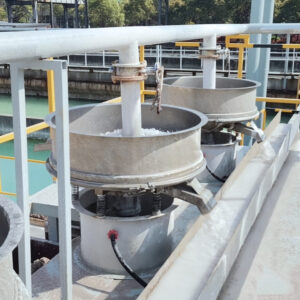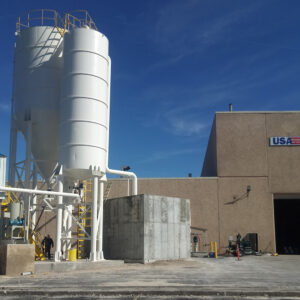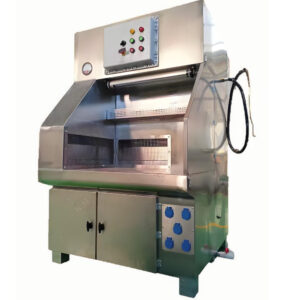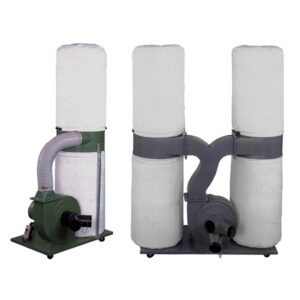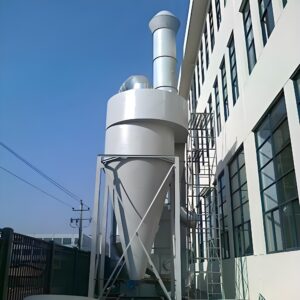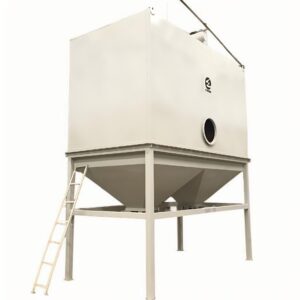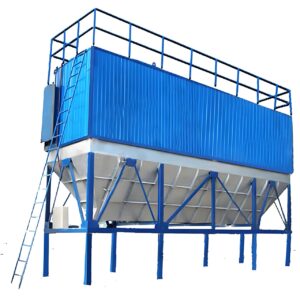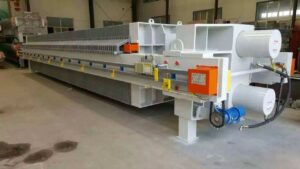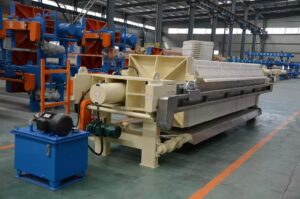여과 산업은 운영 효율성과 비용 효율적인 유지보수 사이의 균형을 유지해야 하는 지속적인 과제에 직면해 있습니다. 필터 플레이트의 마모 또는 손상으로 인한 장비 가동 중단은 시설에 매일 수천 달러의 비용을 초래할 수 있으며, OEM(주문자 상표 부착 생산) 교체 부품은 종종 프리미엄 가격과 긴 리드 타임을 동반합니다. 따라서 성능 표준을 유지하는 안정적이고 비용 효율적인 대안이 절실히 필요합니다.
표준 이하의 교체 부품을 선택하면 즉각적인 비용 절감 이상의 결과를 초래할 수 있습니다. 품질이 좋지 않은 필터 플레이트는 일관성 없는 여과, 유지보수 주기 증가, 잠재적인 장비 손상으로 이어질 수 있습니다. 생산 지연, 품질 관리 문제, 규정 준수 문제는 이러한 운영 문제를 더욱 복잡하게 만들므로 적절한 교체 부품을 선택하는 것은 지속적인 운영을 위해 매우 중요합니다.
이 종합 가이드에서는 다음과 같은 내용을 살펴봅니다. 호환 가능한 필터 플레이트 의 성능 특성, 선택 기준 및 구현 전략을 검토하여 실행 가능한 솔루션으로 제시합니다. 범용 교체 부품과 OEM 옵션을 비교 분석하여 여과 시스템의 성능을 최적화하는 동시에 운영 비용을 효과적으로 관리할 수 있는 기술적 인사이트와 실용적인 권장 사항을 제공합니다.
호환되는 필터 플레이트는 무엇이며 왜 중요한가요?
호환 가능한 필터 플레이트는 OEM 사양과 일치하거나 그 이상으로 설계되어 유연성과 비용 효율성이 뛰어난 오리지널 장비 제조업체 부품을 대체할 수 있는 엔지니어링 대체품입니다. 이러한 범용 필터링 솔루션 기존 필터 프레스 시스템에 원활하게 통합하는 데 필요한 치수 정확도, 재료 특성 및 성능 표준을 유지합니다.
호환성 표준 이해
현대 호환 가능한 필터 플레이트 는 첨단 소재와 정밀 엔지니어링 기술을 사용하여 제조되어 ±0.5mm 공차 이내의 치수 일관성을 보장합니다. 이 플레이트는 최대 16bar의 내압 테스트와 다양한 산업 분야에 대한 화학적 호환성 평가를 포함한 엄격한 테스트 프로토콜을 거칩니다.
업계 데이터에 따르면 호환 가능한 플레이트는 OEM 부품과 95~98% 성능 동등성을 달성하는 동시에 교체 비용을 25~40% 절감할 수 있습니다. 다음과 같은 선도적인 제조업체 포르부 클린 테크 는 여러 필터 프레스 브랜드와 모델 간의 호환성을 검증하는 포괄적인 테스트 프로토콜을 개발했습니다.
재료 공학 및 성능
호환되는 필터 플레이트의 구조는 일반적으로 내화학성과 기계적 내구성을 위해 선택된 고급 폴리프로필렌 또는 강화 열가소성 플라스틱 소재를 사용합니다. 이러한 소재는 열악한 산업 환경에서 탁월한 성능을 발휘하며 표준 작동 조건에서 18~24개월의 수명을 자랑합니다.
"성공적인 호환 필터 플레이트 구현의 핵심은 재료 과학의 발전으로 OEM과 호환 가능한 대체품 간의 성능 차이가 없어졌다는 사실을 이해하는 데 있습니다."라고 Industrial Process Solutions의 여과 시스템 엔지니어인 Sarah Chen 박사는 말합니다.
범용 필터 플레이트는 OEM 부품과 어떻게 다릅니까?
범용 필터 플레이트는 특히 가용성, 비용 효율성 및 표준화 측면에서 기존 OEM 교체품에 비해 강력한 이점을 제공합니다. 하지만 성능 지표, 호환성 요소, 장기적인 운영 영향에 대한 신중한 분석이 필요합니다.
성능 지표 분석
| 비교 요소 | OEM 필터 플레이트 | 범용 필터 플레이트 | 성능 차이 |
|---|---|---|---|
| 초기 비용 | 플레이트당 $150-250 | 플레이트당 $95-165 | 25-40% 절감 |
| 리드 타임 | 4~8주 | 1-2주 | 60-75% 더 빨라짐 |
| 압력 등급 | 16 바 표준 | 16-20 바 범위 | 동등하거나 우월한 |
| 내화학성 | 애플리케이션별 | 광범위한 스펙트럼 | 향상된 다목적성 |
운영상의 이점
범용 필터 플레이트 는 상호 호환성이 뛰어나 여러 필터 프레스 모델에 걸쳐 재고를 표준화할 수 있습니다. 이러한 표준화를 통해 예비 부품 재고 요구량을 약 35% 줄이면서 유지보수 일정의 유연성을 개선할 수 있습니다.
범용 플레이트의 광범위한 내화학성 프로파일 덕분에 성능 저하 없이 다양한 응용 분야에서 사용할 수 있습니다. 제조 시설에서는 부품 가용성 향상으로 인해 범용 교체 시스템으로 전환할 경우 가동 중단 시간이 20~30% 감소한다고 보고합니다.
품질 고려 사항
범용 플레이트는 상당한 이점을 제공하지만 호환성 검증은 여전히 중요합니다. 올바른 장착을 위해서는 신중한 측정 검증과 씰 호환성 평가가 필요합니다. 주요 제조업체는 최적의 선택을 보장하기 위해 상세한 호환성 차트와 기술 지원을 제공합니다.
필터 플레이트 교체를 선택할 때 고려해야 할 사항은 무엇인가요?
필터 플레이트 교체 선택에는 시스템 성능, 유지보수 요구 사항 및 운영 비용에 직접적인 영향을 미치는 여러 가지 기술 및 운영 요소가 포함됩니다. 이러한 고려 사항을 이해하면 최적의 장비 성능을 보장하고 투자 수익을 극대화할 수 있습니다.
기술 사양 평가
재료 호환성은 공정 화학 물질, 작동 온도 및 압력 요구 사항에 대한 분석이 필요한 주요 선택 기준입니다. 호환 가능한 필터 부품 는 작동 압력 하에서 구조적 무결성을 유지하면서 모든 공정 유체에 대한 내화학성을 입증해야 합니다.
치수 정확도 검증을 통해 적절한 씰링과 최적의 여과 성능을 보장합니다. 중요한 측정에는 플레이트 두께(일반적으로 25-40mm), 포트 치수 및 씰링 표면 사양이 포함됩니다. 0.5mm 이내의 공차 검증을 통해 운영 문제를 방지하고 일관된 성능을 보장합니다.
운영 환경 요인
| 환경적 요인 | 선택에 미치는 영향 | 권장 사양 |
|---|---|---|
| 온도 범위 | 재료 선택 | -20°C ~ +120°C 기능 |
| 화학 물질 노출 | 저항 요구 사항 | 다중 화학물질 호환성 |
| 압력 사이클링 | 피로 저항 | 50,000회 이상의 주기 등급 |
| 청소 빈도 | 표면 속성 | 매끄럽고 다공성 없는 마감 |
경제성 평가 프레임워크
총소유비용 분석에는 초기 구매 가격, 설치 비용, 유지보수 요구 사항, 예상 서비스 수명이 포함되어야 합니다. 필터 플레이트 교체 초기 가격 비교만으로는 의사 결정을 내리기 어렵기 때문에 수명 주기 비용 분석을 통해 이점을 얻을 수 있습니다.
"성공적인 교체 부품을 선택하려면 즉각적인 비용 절감과 장기적인 운영 안정성의 균형을 맞춰야 합니다."라고 Continental Processing의 유지보수 책임자인 마크 톰슨은 설명합니다. "가장 저렴한 옵션이 최고의 가치를 제공하는 경우는 거의 없습니다."
호환되는 여과 부품을 올바르게 설치하는 방법은 무엇인가요?
호환되는 필터 플레이트를 올바르게 설치하려면 설치 전 검증, 올바른 설치 절차, 설치 후 검증을 아우르는 체계적인 접근 방식이 필요합니다. 정해진 프로토콜을 따르면 최적의 성능을 보장하고 조기 고장을 방지할 수 있습니다.
설치 전 확인
성공적인 설치는 치수 확인, 씰 호환성 평가, 하드웨어 호환성 확인 등 포괄적인 호환성 검증에서 시작됩니다. 각 호환 가능한 여과 부품 는 표면 결함에 대한 육안 검사, 치수 정확도 검증 및 재료 인증 검토를 거쳐야 합니다.
문서 검토를 통해 제조업체 사양 및 업계 표준을 준수하는지 확인합니다. 설치 팀은 교체 부품이 보증 범위를 유지하면서 원래 장비 사양을 충족하거나 초과하는지 확인해야 합니다.
설치 절차
체계적인 설치는 제조업체가 지정한 토크 순서와 씰링 절차를 따릅니다. 중요한 단계에는 적절한 씰 배치, 균일한 볼트 조임(일반적으로 45~65Nm), 정렬 확인이 포함됩니다. 전문 설치 팀은 표준화된 절차를 따를 때 조기 고장이 901TP3% 감소한다고 보고합니다.
설치 후 유효성 검사
성능 검증에는 압력 테스트, 누출 감지, 초기 운영 평가가 포함됩니다. 시스템은 누출이나 성능 이상을 모니터링하면서 최대 작동 압력까지 점진적으로 압력을 높여야 합니다.
가장 일반적인 필터 프레스 교체 부품은 무엇인가요?
필터 프레스 유지보수를 위해서는 마모 패턴, 교체 빈도, 주요 구성품의 상호 작용에 대한 이해가 필요합니다. 가장 자주 교체되는 구성 요소를 파악하면 사전 예방적 유지보수 계획과 재고 최적화가 가능합니다.
마모가 심한 부품 분석
필터 프레스 교체 부품 운영 조건과 유지보수 관행에 따라 예측 가능한 마모 패턴을 따르세요. 필터 플레이트는 일반적으로 18~24개월마다 교체해야 하며, 씰과 개스킷은 화학물질 노출 및 청소 빈도에 따라 6~12개월마다 교체해야 합니다.
| 구성 요소 유형 | 교체 빈도 | 일반적인 비용 범위 | 인벤토리 우선순위 |
|---|---|---|---|
| 필터 플레이트 | 18-24개월 | 각 $95-250 | 높음 |
| 씰링 개스킷 | 6-12개월 | 각 $15-35 | 중요 |
| 유압 씰 | 12-18개월 | 각 $25-85 | Medium |
| 밸브 구성 요소 | 24-36개월 | 각 $45-150 | 낮음 |
착용 패턴 인식
마모 패턴을 이해하면 예기치 않은 다운타임을 최소화하는 예측 유지보수 전략이 가능합니다. 육안 검사 프로토콜은 부품 고장에 앞서 표면 균열, 씰 변형, 치수 변화 등 조기 마모 지표를 식별합니다.
재고 관리 전략
효과적인 예비 부품 관리는 재고 보유 비용과 가용성 요구 사항의 균형을 유지합니다. 씰 및 개스킷과 같은 중요 구성품은 교체 빈도가 높고 다운타임 영향에 비해 비용이 저렴하기 때문에 재고 수준을 높이는 것이 정당화됩니다.
일반 필터 플레이트는 운영 효율성에 어떤 영향을 미칠까요?
일반 필터 플레이트는 여과 성능, 유지보수 요구 사항, 시스템 신뢰성 등 다양한 경로를 통해 운영 효율성에 영향을 미칩니다. 이러한 영향을 이해하면 교체 부품 선택 및 운영 전략과 관련하여 정보에 입각한 의사 결정을 내릴 수 있습니다.
여과 성능 분석
일반 필터 플레이트 는 적절하게 선택 및 설치했을 때 OEM 부품과 비슷한 여과 효율을 보여줍니다. 성능 테스트 결과 표준 산업용 애플리케이션에서 96-99% 효율을 유지했으며, 일부 애플리케이션에서는 향상된 표면 마감으로 인해 성능이 개선된 것으로 나타났습니다.
최적화된 표면 질감과 배수 패턴으로 인해 일반 플레이트를 사용하면 케이크 배출 특성이 개선되는 경우가 많습니다. 시설에서는 케이크 배출 특성이 15~20% 개선되어 세척 시간이 단축되고 처리량이 향상되었다고 보고합니다.
유지 관리 영향 평가
일반 플레이트는 일반적으로 OEM 부품과 유사한 유지보수 프로토콜이 필요하며, 일부 애플리케이션에서는 향상된 내화학성으로 인해 유지보수 빈도가 감소합니다. 범용 플레이트의 광범위한 화학적 호환성은 화학적 공격의 위험을 줄이고 서비스 수명을 연장합니다.
"일반 필터 플레이트는 당사의 유지보수 접근 방식에 혁신을 가져왔습니다."라고 Midwest Chemical Processing의 플랜트 엔지니어인 Jennifer Rodriguez는 말합니다. "여러 프레스 라인에 걸친 표준화로 예비 부품 재고를 40% 줄이면서 유지보수 효율성을 개선했습니다."
시스템 안정성 고려 사항
일반 플레이트는 많은 장점을 제공하지만, 최적의 안정성을 위해서는 적절한 선택과 설치가 여전히 중요합니다. 표준화된 일반 플레이트 시스템을 사용하는 시설에서는 가용성과 상호 호환성이 향상되어 부품 관련 가동 중단 시간이 85-901TP3% 감소했다고 보고합니다.
호환 필터 플레이트는 어떤 품질 기준을 충족해야 하나요?
호환 가능한 필터 플레이트의 품질 표준에는 재료 사양, 제조 공차, 성능 요구 사항 및 테스트 프로토콜이 포함됩니다. 이러한 표준을 이해하면 운영 안정성과 규정 준수를 유지하는 교체 부품을 선택할 수 있습니다.
재료 표준 및 인증
호환되는 필터 플레이트 식품 애플리케이션에 대한 FDA 규정 준수, 내화학성 인증, 치수 정확도 사양 등 관련 산업 표준을 충족해야 합니다. 재료 인증은 중요한 애플리케이션에 대한 추적성과 품질 보증을 제공합니다.
제조 표준은 일반적으로 제약, 식품 가공 및 화학 애플리케이션에 대한 추가 산업별 요구 사항과 함께 ISO 9001 인증을 요구합니다. 선도적인 제조업체는 일관된 제품 품질을 보장하는 포괄적인 품질 관리 시스템을 유지합니다.
테스트 및 검증 프로토콜
포괄적인 테스트 프로토콜을 통해 압력 사이클링, 화학물질 노출, 열 사이클링 등 시뮬레이션된 작동 조건에서 성능을 검증합니다. 이러한 테스트를 통해 예상 작동 조건에서 안정적인 성능을 보장하고 잠재적인 고장 모드를 식별합니다.
품질 보증 프로그램에는 입고 검사, 공정 중 모니터링, 최종 제품 테스트가 포함되어야 합니다. 통계적 프로세스 관리는 일관된 품질을 보장하는 동시에 결함이 있는 제품이 고객에게 전달될 위험을 줄여줍니다.
미래 호환 가능한 여과 장비 는 표준화 증가, 소재 개선, 성능 기능 향상에 주목합니다. 제조 기술이 발전함에 따라 OEM과 호환되는 부품의 구분이 계속 줄어들고 있으며, 사용자에게 더 큰 유연성과 비용 효율성을 제공합니다.
호환 필터 플레이트는 성능 저하 없이 비용을 크게 절감할 수 있는 여과 시스템 유지보수를 위한 성숙하고 신뢰할 수 있는 솔루션입니다. 성공의 열쇠는 최적의 시스템 성능을 보장하는 적절한 선택, 설치 및 유지보수 관행에 있습니다. 호환성 요구 사항, 품질 표준 및 운영상의 영향을 이해함으로써 시설에서는 성능과 비용 효율성을 모두 최적화하는 호환 가능한 교체 부품 전략을 자신 있게 구현할 수 있습니다.
호환 가능한 필터 플레이트로의 전환을 고려 중인 조직은 현재 시스템 요구사항과 운영 목표에 대한 종합적인 평가부터 시작하세요. 성공적인 구현을 위해 기술 지원 및 호환성 검증을 제공할 수 있는 자격을 갖춘 공급업체와 상담하세요. 여과 성능과 유지보수 비용의 균형을 맞추는 데 있어 귀사의 시설에서 직면하고 있는 구체적인 과제는 무엇인가요?
자주 묻는 질문
Q: 호환 가능한 필터 플레이트는 무엇이며 범용 교체 부품으로서 중요한 이유는 무엇인가요?
A: 호환 필터 플레이트는 다양한 여과 시스템에 범용적으로 장착할 수 있도록 설계된 교체 부품입니다. 이 부품은 OEM(주문자 상표 부착 생산) 부품을 대체할 수 있는 비용 효율적인 대안으로, 브랜드별로 비싼 비용을 들여 교체할 필요 없이 여과 시스템을 계속 효율적으로 운영할 수 있도록 해줍니다. 호환 가능한 필터 플레이트를 범용 교체 부품으로 사용하면 일관된 여과 성능을 유지하고 장비 수명을 연장하며 여러 특수 부품의 재고를 줄여 유지보수를 간소화할 수 있습니다.
Q: 호환되는 필터 플레이트가 기존 여과 시스템에 맞는지 어떻게 알 수 있나요?
A: 호환되는 필터 플레이트가 시스템에 적합한지 확인하려면 크기, 재질, 연결 유형 등의 사양을 확인하여 현재 사용 중인 필터의 요구사항과 일치하는지 확인하세요. 범용 교체 부품은 다양한 모델을 수용할 수 있도록 유연한 치수와 공통 피팅으로 설계되었습니다. 필터의 모델 번호를 참조하거나 호환 가능한 시스템이 나열된 공급업체 가이드를 참조하는 것도 도움이 됩니다. 이를 통해 원활한 설치와 최적의 성능을 보장할 수 있습니다.
Q: 범용 교체 부품용 호환 필터 플레이트에는 일반적으로 어떤 재료가 사용되나요?
A: 호환되는 필터 플레이트는 일반적으로 스테인리스 스틸(주로 304 스테인리스 스틸) 또는 고품질 플라스틱과 같은 내구성 있는 재질로 만들어집니다. 스테인리스 스틸 버전은 내식성과 구조적 무결성이 뛰어나 고강도 애플리케이션에 이상적입니다. 플라스틱 버전은 가볍고 화학물질 노출에 강할 수 있습니다. 소재 선택은 특정 여과 시스템에 대한 필터 플레이트의 수명과 적합성에 영향을 미치므로 운영 환경에 맞는 플레이트를 선택하는 것이 중요합니다.
Q: 호환되는 필터 플레이트를 사용하면 시스템의 여과 효율이나 수명에 영향을 미칠 수 있나요?
A: 평판이 좋은 제조업체에서 공급하는 호환 필터 플레이트는 OEM 표준을 충족하거나 초과하도록 설계되었으므로 일반적으로 여과 효율이나 시스템 수명에 영향을 미치지 않습니다. 동등한 성능을 제공하므로 시스템에서 이물질이 없는 깨끗한 출력을 유지할 수 있습니다. 그러나 품질은 공급업체마다 다를 수 있으므로 항상 내구성이 입증된 범용 교체 부품을 선택하여 여과 성능에 부정적인 영향을 미치지 않도록 하세요.
Q: OEM 부품 대신 호환 필터 플레이트와 같은 범용 교체 부품을 선택하면 어떤 주요 이점이 있나요?
A: 주요 혜택은 다음과 같습니다:
- 비용 절감: 범용 부품은 종종 OEM 대체품보다 더 저렴합니다.
- 더 넓은 가용성: 브랜드 제한 없이 여러 공급업체에서 쉽게 소싱할 수 있습니다.
- 간소화된 인벤토리: 하나의 부품으로 여러 필터 모델을 지원하여 복잡성을 줄일 수 있습니다.
- 간편한 교체: 간단한 설치가 가능하도록 설계되어 가동 중단 시간을 최소화합니다.
이러한 장점으로 인해 호환 가능한 필터 플레이트는 여과 시스템을 효율적으로 유지 관리하기 위한 실용적인 선택입니다.
Q: 호환 가능한 필터 플레이트는 수영장, 산업용 또는 연못 필터와 같은 모든 유형의 여과 시스템에 적합합니까?
A: 범용 교체 부품인 호환 필터 플레이트는 수영장 필터, 산업용 필터 프레스, 연못 여과 시스템 등 다양한 애플리케이션에 사용할 수 있습니다. 그러나 호환성은 각 시스템의 특정 설계 및 운영 요구 사항에 따라 달라집니다. 필터 유형에 맞게 특별히 설계된 플레이트를 선택하면 적절한 적합성, 압력 처리 및 여과 효과를 보장할 수 있습니다. 항상 공급업체와 호환성 세부 정보를 확인하여 여과 시스템 요구 사항에 정확하게 부합하는지 확인하세요.
외부 리소스
- 모든 교체 부품 및 필터 패드 - 웹스 워터 가든 - 간편한 설치를 위해 설계된 필터 매트, 폼 링, 커넥터 등 연못 여과 시스템을 위한 포괄적인 호환 필터 플레이트와 범용 교체 부품을 제공합니다.
- 필터 플레이트 - BVV - 다양한 여과 시스템의 범용 교체 부품으로 사용할 수 있는 스테인리스 스틸 필터 플레이트와 스태킹 링 키트를 세부 사양과 다양한 크기로 제공합니다.
- AcroPrep 필터 플레이트 - 피셔 사이언티픽(PDF) - 실험실 환경의 자동화 시스템 및 진공 여과 설정과의 보편적인 호환성을 강조하는 AcroPrep 필터 플레이트에 대한 자세한 정보를 제공합니다.
- Hayward SwimClear C5030 필터 교체 부품 다이어그램-할인 수영장 마트 - Hayward 수영장 여과 장비의 필수 호환 필터 플레이트와 카트리지 및 O-링과 같은 범용 교체 부품을 나열하여 안정적인 성능을 보장합니다.
- 펜에어 수영장 필터 부품-수영장 공급 세계 - 다양한 모델에 대한 간편한 탐색 및 호환성 세부 정보와 함께 펜타이어 필터 시스템용 교체용 필터 플레이트 및 범용 부품을 폭넓게 선택할 수 있습니다.
- 범용 필터 부품 및 액세서리 - 빠른 필터링 - 주거용 및 상업용 여과 시스템용 호환 필터 플레이트 및 액세서리를 포함한 다양한 범용 교체 부품을 제공하며, 고객 지원 및 제품 가이드를 영어로 제공합니다.
